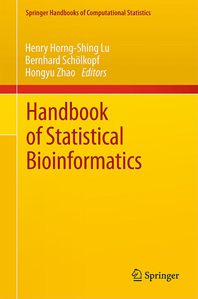Book Chapter (Peer-reviewed)
Mixture tree construction and its applications

Abstract
A new method for building a gene tree from Single Nucleotide Polymorphism (SNP) data was developed by Chen and Lindsay (Biometrika 93(4):843–860, 2006). Called the mixture tree, it was based on an ancestral mixture model. The sieve parameter in the model plays the role of time in the evolutionary tree of the sequences. By varying the sieve parameter, one can create a hierarchical tree that estimates the population structure at each fixed backward point in time. In this chapter, we will review the model and then present an application to the clustering of the mitochondrial sequences to show that the approach performs well. A simulator that simulates real SNPs sequences with unknown ancestral history will be introduced. Using the simulator we will compare the mixture trees with true trees to evaluate how well the mixture tree method performs. Comparison with some existing methods including neighbor-joining method and maximum parsimony method will also be presented in this chapter.
Full Citation
Chen, S.-C., M. Li, M.S. Rosenberg, and B.G. Lindsay (2011) Mixture tree construction and its applications. Pp. 135–147 in Handbook of Statistical Bioinformatics, H.H.-S. Lu, B. Schölkopf and H. Zhao, eds. Springer-Verlag: Berlin.
DOI
10.1007/978-3-642-16345-6_7Direct Download
Download PDFGoogle Scholar Data
2 citations as of 2024-02-19
Altmetrics
